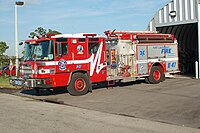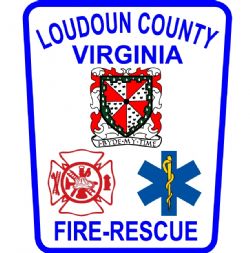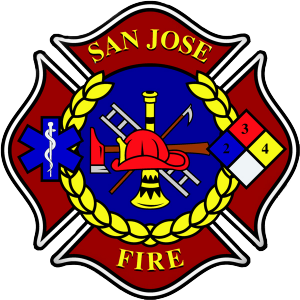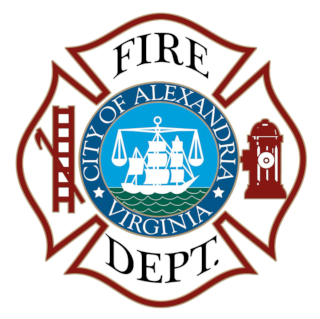History
Fort Lauderdale's fire department was created in 1912 as a volunteer department after a large conflagration destroyed a large portion of what is now the downtown core of Fort Lauderdale. The fire, which destroyed all but three buildings in the previously bustling downtown business district, prompted the city to purchase its first fire equipment consisting of a chemical extinguisher mounted on carriage wheels, and a hand-operated pump. Unique to Fort Lauderdale was that the fire department never had horse-drawn apparatus. The chemical extinguisher was pulled to fires by an International Harvester truck, and the pump was pulled to the fire scene by the firefighters themselves. The pump also carried 500 feet of fire hose, which at times was not sufficient to reach fires in the city, due to inadequate roads. [5]
The first fire station, the second in Broward County, was built in January 1913 on Andrews Avenue and SW 2nd Street and was part of the first City Hall building. The police station, jail, and all other city offices. Prior to this time, all firefighting equipment was housed at a private citizen's warehouse. In 1913, the department and its equipment would be put to use at the first major fire since the great fire of 1912, when the Osceola Hotel burned down. After this fire, the department received its first fire truck, consisting of a used car sold to the town. [5]
When Dr. R. S. Lowry was appointed chief in 1914, he divided the town into four districts. When a fire occurred, each district had a unique whistle that was blown to direct the firefighters to the fire's location. When Milo Sherman was hired as the first paid fire chief in 1917, he was given the blessing of the city to purchase the first formal piece of fire apparatus. At the time, the department was still using the used automobile as a fire truck, and Chief Sherman then purchased an American LaFrance fire engine. Shortly after buying this first engine, Chief Sherman was able to purchase a Brockway truck for $7,500 which carried hundreds of gallons of water, used to fight the numerous brush fires, which at the time were a threat to the city. Chief Sherman also built the department's second station with his own money at 700 S Andrews Avenue. He did this because he felt the city needed a fire station on each side of the New River. This fire station still stands today, and operated until it was sold in 1985 to a private citizen, where it is currently used as a law office. [5]
In 1926 Chief Dooley requested the department build its third fire station at 1022 W. Las Olas Blvd at a cost just over $21,000. This west side fire station, later renamed as station 8, served the department until 2004, when it was closed and its crews moved to the new station 2. It is being renovated as the Fort Lauderdale Fire Museum. Also in 1926 as part of Chief Dooley's improvements to the fire department was the purchase of the department's first ladder truck, a 1926 Seagrave Fire Apparatus ladder truck with chemical equipment, at a cost of $9,500. The final improvement Chief Dooley implemented was the installation of a Gamewell fire alarm system with a central monitoring station, and 40 call boxes to be installed at locations throughout the city. By 1932, the number of fire alarm boxes had increased to over 60, and was further increased in 1937 to 71 fire alarm boxes, with 15 more added to the growing city in 1941. [5]
In 1929, the fire department was affected by the Great Depression, resulting in the closing of two of the department's stations, and the laying-off of firefighters such that only seven remained with the department. This lack of staffing was partly blamed for the catastrophic fire that occurred at Pilkington Yacht Basin in 1935, and after that fire seven additional firefighters were hired. On December 7, 1940, the fire department experienced its first Line of Duty Death, when Firefighter Robert Knight was killed when he stepped in a puddle contacted by an energized high-voltage wire. Firefighter Knight was killed instantly, and another firefighter was severely injured by the electric current as well. [5]
In 1948 the department opened its fourth fire station at 2871 E Sunrise Blvd near the beach, later renamed to fire station 13. The fire station was originally staffed with one engine and one ladder. Also in 1948, the department established its first pension plan for retirees. [5]
On November 28, 1961, the fire department experienced its second Line of Duty Death when firefighter Norman Hastings suffered a heart attack while training near the fire station. He reportedly collapsed face first into the running board of the pumper after complaining of chest pains. He was 45 years old, and a 13-year veteran of the department. [5]
In 1964, the fire department employed 178 firefighters and had a budget of over 1 million dollars. The department purchased its first fireboat, which would be placed out of service due to corrosion only six months later. Also in this year, the fire department opened two new identical fire stations, at 1121 NW 9th Avenue, and 1000 SW 27th Avenue. These two fire stations would later be renamed to station 46, and station 47 respectively. [5]
In 1969, the fire department answered 1,951 emergency calls, and made over 21,000 fire inspections. Eight people were killed in fires, and over 70 were injured that year, with about half of the injuries belonging to firefighters. The fire department was named the best fire preventing department in its class in the entire State of Florida, after being evaluated on fire inspections, fire education talks, and fire prevention methods used in the hoods of restaurant ranges. [5]
In 1970, the department assisted the Fort Lauderdale Police Department in suppressing riots occurring throughout the city. Firefighters had to combat numerous arson fires as well as assist with crowd control. Numerous bullet holes were later found on fire apparatus, and crews used trash can lids to deflect rocks and bottles thrown at them while responding. [5]
Numerous changes occurred in the department in the 1970s, with several improving the health and safety of firefighters. On September 20, 1970, the city hired its first black firefighter, Bobby Glenn, who later retired after serving the department for over 21 years. The city purchased its first set of MSA SCBA breathing apparatus, replacing old canister masks that were rarely worn. Also, firefighters stopped riding to emergencies on the tailboard of fire apparatus and were contained in cabs of apparatus, protecting them from various hazards including falling off the apparatus. Also, in 1971 International Association of Fire Fighters Local 1545 was created, becoming the city's first recognized labor union. In 1975, David DiPetrillo, the first firefighter who was also certified as a paramedic was hired. In 1978, the city hired its first female firefighters, a group of five, many of whom would serve the department for decades. Also in 1979, the department created the hazardous material team to deal with chemical emergencies, the first created in Broward County. [5]
In 1977, the department began to change the color scheme of its fire apparatus. Keeping with national trends citing a study in improved safety and visibility of fire apparatus, the department began purchasing all new fire apparatus in lime green. In 1985, the department realized it would change back to red apparatus, but this was after a large purchase in 1984 of rear-engine hush apparatus made by E-One. The department continued using lime green apparatus until 1998, when the last remaining units were shifted to reserve pieces. These apparatus, served as spare fire engines until they were sold at auction in 2005. [5]
In 1985, the department entered into a mutual-aid agreement with 22 other fire-rescue departments in Broward County. The agreement was the first official document that guaranteed responses by other fire departments for assistance to major emergencies in cities. The document also set minimum standards on staffing, and response requirements for mutual aid responses and this mutual aid agreement was paramount in establishing future relationships between fire departments, such as the one that established the Broward County Uniform Station Numbering system. [5]
In 1988, the fire department began using the Incident Command System as part of its operation at emergency scenes. Also part of this change was the use of RIT teams, which would be dispatched along with a second battalion chief to any working fire in the city. [5]
Chief Jim Sparr is credited with creating the department's first responder system in 1989. Under this system, a Fort Lauderdale Fire-Rescue unit would respond to any medical emergency in the city under a three-tiered system, with Broward County EMS providing patient care, and private ambulance companies providing patient transport to the local hospitals. Chief Sparr also required firefighters to conduct station repairs and other errands including mowing the lawns of fire stations. [5]
In December 1992, the department formed the Technical Rescue Team to respond to dive rescue, and high-angle emergencies throughout the city. Originally named the SHARC team, for Special Hazards and Rescue Company, the team of 27 members were specially trained to handle unusual rescue emergencies that would occur in the city. [5]
In 1995, under the leadership of Chief Donald Harkins, Fort Lauderdale Fire-Rescue placed its first advanced life support (ALS) Engine Company in service, and began providing EMS under a two-tiered system with Fort Lauderdale Fire Rescue providing patient care, and Broward County Fire Rescue providing transport services to the hospital. [5]
A first for the city occurred in 1997, when the city hired its first African American Fire Chief, Otis J. Latin. Chief Latin came to the department after heading the District of Columbia Fire Department, and rising to the rank of assistant chief of the Houston Fire Department. He would prepare the department for a major change that occurred in 1998, when the department transitioned to provide Emergency Medical Services under a single-tier system. This meant that the department would now be the first responder on all medical calls, provide all ALS treatments, and provide all patient transports to local hospitals. This was a large transition for the department, and resulted in the purchasing of 6 new rescue trucks, and the largest hiring class ever of 64 state certified firefighter/paramedics. Several of the Broward County Fire-Rescue employees that had been working in Fort Lauderdale stations were included in this group, with the remainder of Broward County Fire Rescue's employees and all of its equipment being returned to BCFR. [5]
Also in 1998 was the modernization of the fire department fleet. From 1998 to 2000, all fire apparatus was replaced with new Quantum fire apparatus made by Pierce Manufacturing. Also purchased were new rescue units as part of the transition to providing ALS transport services. [5]
On December 20, 1999, the Wilton Manors Volunteer Fire Department was closed, and Fort Lauderdale Fire-Rescue began proving both Fire & EMS services to the cities of Wilton Manors and Lazy Lake from fire station 16. Wilton Manors still retained its fire prevention staff who are responsible for all fire prevention & investigation activities in the municipal limits. Today the department has over 450 personnel and provides fire prevention, fire suppression, fire investigation, rescue, EMS, and ocean rescue services to the people of Fort Lauderdale, & provides contract fire, rescue & EMS services to the citizens of Wilton Manors, Florida and Lazy Lake, Florida. [5]
In 2012 under the leadership of Fire Chief Jeffrey A. Justinak, the department celebrated its first 100 years of public service to its citizens. The International Association of FireFighters (IAFF) Local now is 765.
In 2018, the department hired its first female Fire Chief in its department history Rhoda Mae. Kerr. [6]

























